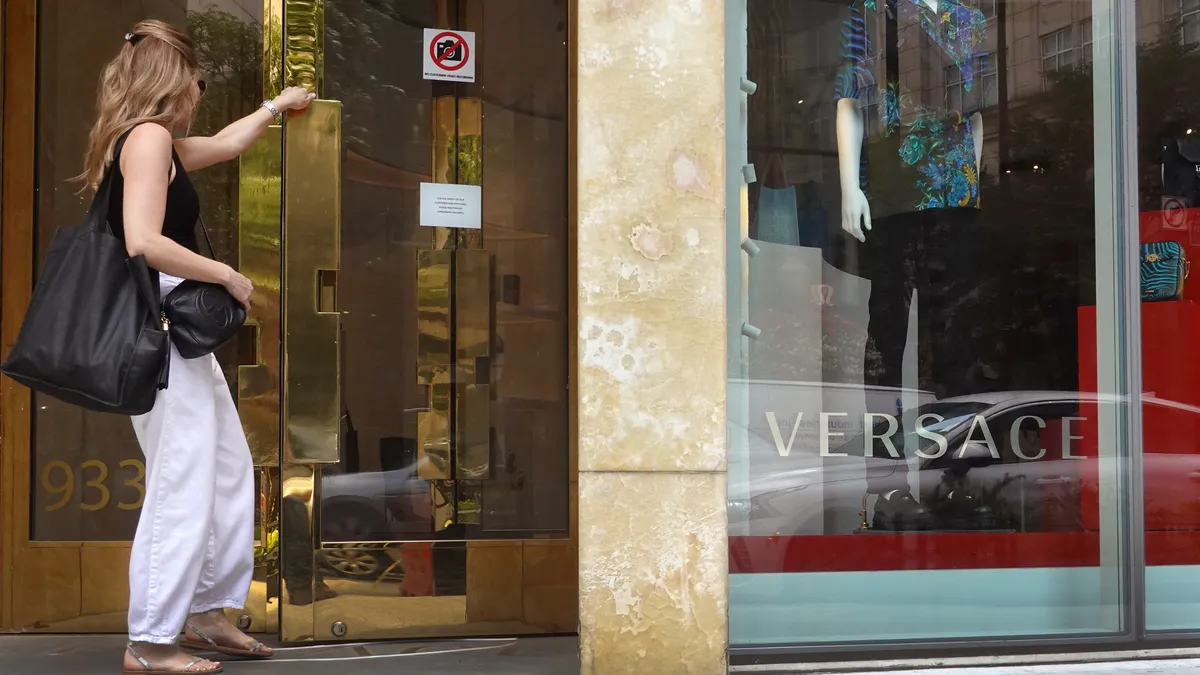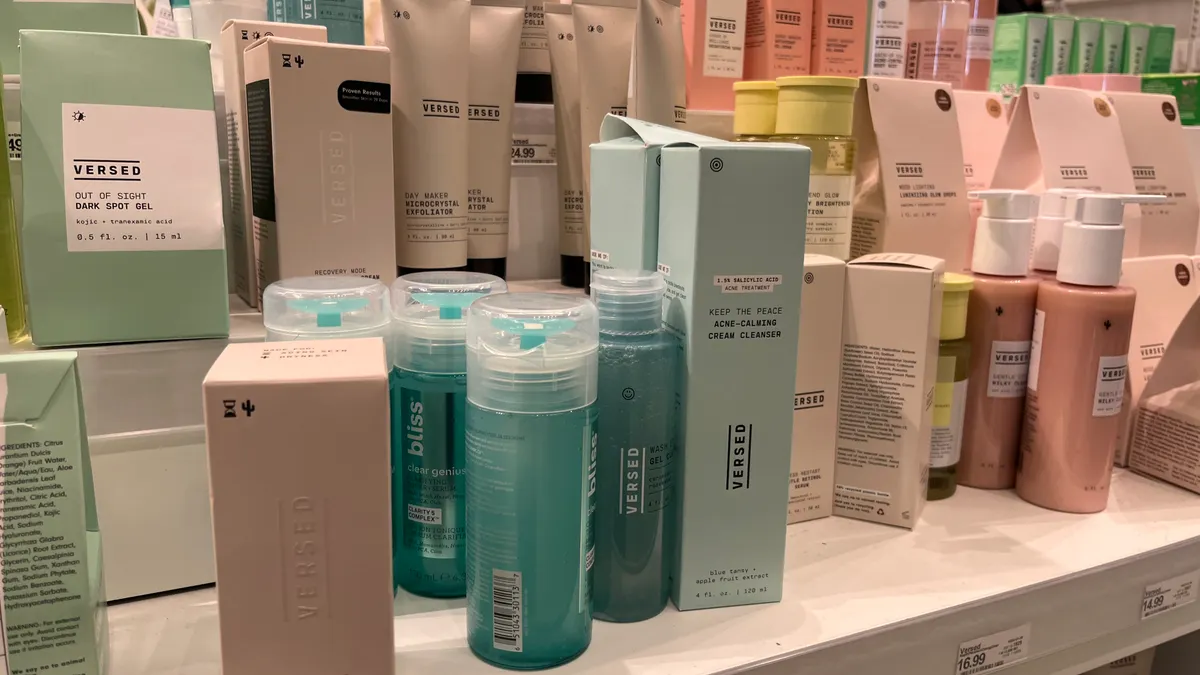Abercrombie & Fitch spent about a decade doing pretty well with its young-adult customer. But these days the apparel retailer is surprisingly flat-flooted, with sales plummeting as it scrambles to make major changes to its merchandise, marketing, hiring, and even to the look and smell of its physical stores.
In its recent hey-day (it was originally founded in the 19th century as a hunting and sport fishing outfitter for wealthy New York gentlemen), the retailer seemed to dictate what the cool kids should wear.
Indeed, recently departed CEO Mike Jeffries said as much, often, horrifying many with remarks like “A lot of people don’t belong [in our clothes], and they can’t belong” and “Are we exclusionary? Absolutely. Those companies that are in trouble are trying to target everybody: young, old, fat, skinny. But then you become totally vanilla.”
Why aren't kids listening to Abercrombie anymore? That's probably the wrong question. It's more likely that they never were. It turns out that Abercrombie may have simply been offering what kids wanted, not dictating what kids wanted.
So how do you figure out what the customer wants? These days it takes technology as well as a certain mindset, and retailers' physical stores can function as labs for the innovation it takes.
Let customers 'speak with their actions'
Now it seems that Abercrombie's top-down strategy isn’t viable and that it is having trouble figuring out what kids do want.
“Dialing down the fragrance, bigger wattage lights brightening up the store, even then it’s not enough,” Mark Cohen, retail studies professor at Columbia University’s business school, told Retail Dive. “Gone is the day of the brand being really cool, now it’s emblematic of 'not cool.'”
Cohen notes that L.L. Bean is less afraid of being “totally vanilla” and more concerned about pleasing its customers. “I give them tremendous credit for saying ‘We’re going to do what the customer permits us to do,’ as opposed to the Abercrombie's and Macy’s of the world that attempt to lead the customer by the nose—that doesn’t have a happy ending.”
This type of thinking requires a new way of looking at data and the physical store itself.
“Observational bias can lead retailers to misinterpret results,” Brett Wickard, founder of “lean retail” software company FieldStack, told Retail Dive. “Human bias can lead retailers in the wrong direction. They're often convinced that their customers will like X or won’t like Y—sometimes they’re right and other times they're not. Testing these ideas and letting their customers speak with their actions is the only way to know for sure. Lean retail allows retailers to look at the effect of their decisions across their enterprise and helps ensure they’re asking the right questions.”
Physical stores are 'ideal' labs
It wasn’t that long ago that many seers were predicting the end of brick-and-mortar stores. So it has come to the surprise of many that pure-play e-retailers like Warby Parker and Birchbox, which seemed the epitome of innovation, e-commerce success, and the future of retail, have opened physical stores.
What we understand now is that both retailers have treated these stores as incubators. (In Warby Parker’s case, healthy sales have led to yet more brick-and-mortar stores.) It all started with allowing customers to come into his apartment to try on glasses, Warby Parker co-founder Neil Blumenthal told Inc. magazine.
"People would come in, and we would lay out the glasses on the dining room table,” he said. “And we thought it was going to be a sub-optimal experience, but it ended up being a very special experience in that we could build relationships with our customers. They could try on all the glasses. We started to realize maybe there was a place for traditional bricks-and-mortar retail."
Physical stores do provide “the ideal testing ground for new ideas,” says Wickard. “Retailers can isolate tests to a specific market and provide controls for comparison.”
Indeed, Hayley Barna, 29, and Katia Beauchamp, 30, co-founders and co-CEOs of Birchbox, say they do treat their physical store in Manhattan as a retail lab. Birchbox employs cameras and heat sensors to track customers as they shop and try samples. The data help the company discover which products receive the most attention and which are actually purchased.
And Fan Bi, founder of custom menswear retailer Blank Label, which began as a pure-play e-commerce venture, says that, since opening its first physical store, the company has discovered that connecting with customers there has yielded rich information.
“The in-store experience is very personal, one on one,” Bi says. “Long term we want to be able to get to 50 or 75 physical storefronts across the country. People are finding out about us online, we drive them into a store, which brings them back online. And with physical stores, as the market continues to change, we'll also be able to be more adaptive.”
Predicting the future
While Abercrombie & Fitch was once confident in its ability to tell teens what was cool, it might have done better leveraging information it already possessed to make adjustments as teens’ tastes changed.
“Everybody has data,” Wickard says. “Using it is the hard part.”
Too often, retailers think in binary terms of either/or, this/that, yes/no, rather than looking at how different customers help predict the movement of different products. Again, that takes technology, but also the right approach.
“We can infer future demand through more than just sales history,” Wickard says. “Our algorithm predicts the sales velocity of individual items based not only on what was selling, but a whole host of additional factors—like who was buying. Certain people predict what other people will buy, and what will be uncool. There are market leaders, taste-makers. And when the customer is telling you what’s cool, act quickly.”
Beyond that, retailers must be always looking at the information their customers are giving them. “We prize flow,” Wickard says. “The more you maintain data in a continuous fashion, the finer the predictions you can achieve.”
“Retailers should be testing new ideas constantly,” he continued. “Test and measure. Adjust. Test and measure. Innovation is one of the keys to retaining current customers, and it's critical in reaching and expanding their customer base. Their customers are the only people who can tell them if they’re right. Above all, predictions worth anything are part art, part science.”





















